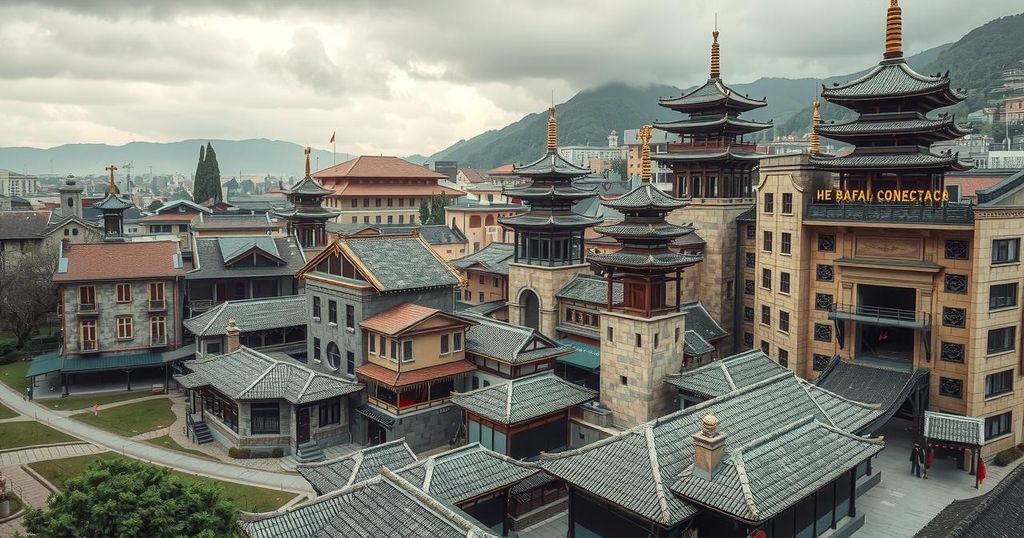World news
AP, AP PHOTO, APTN, ASIA, ASSOCIATED PRESS, BASHA, BASHAR ASSAD, BEIRUT, CURRENT EVENTS, EUROPE, FRANCE, HAFEZ ASSAD, HAMA, LEBANON, MICHEL EULER, MUSLIM BROTHERHOOD, NEWS, PARIS, PROTEST, PROTESTS, REFUGEE CRISIS, RI, SHAAM, SHAAM NEWS NETWORK, SYRIA, UGARIT, UGARIT NEWS, UGARIT NEWS GROUP, WAR
Fatima Khan
0 Comments
The Strategic and Symbolic Significance of Hama’s Capture in Syria
The Syrian army’s withdrawal from Hama marks a significant setback for President Bashar Assad amid ongoing civil unrest. Hama, known for its notorious past, symbolizes resistance against the regime and its current capture by insurgents could shift the power balance. With Hama’s strategic importance, further advances toward Homs may change the course of the conflict.
The Syrian army’s withdrawal from Hama signifies a substantial loss for President Bashar Assad, as insurgents successfully breached its defenses. Reports indicate that opposition fighters have gained control of the city, highlighting a critical moment in the ongoing civil war that has persisted for over a decade. This event is particularly significant due to Hama’s dark historical context intertwined with past violent repression.
Hama, a city known for its waterwheels along the Orontes River, gained infamy for the Hama Massacre perpetrated by Hafez Assad’s regime in February 1982. The violent government assault resulted in the deaths or disappearances of up to 40,000 people within a month. This tragic episode looms large in the collective memory of Syrians, serving as a foundation for the contemporary uprising.
In the early stages of the Arab Spring in 2011, Hama emerged as a focal point for massive anti-government protests against President Bashar Assad. Following a temporary withdrawal of government forces, the residents seized a brief period of autonomy, embodying a spirit of resistance that echoed the painful history of the city. However, government retaliations led to brutal crackdowns on dissent, marking the struggle for freedom.
According to Aron Lund, a Syria expert, Hama’s symbolic importance lies in its historical narrative, which has shaped both the opposition and the regime. He notes that the memories of the Hama Massacre have intensified the resolve of both military leaders and insurgents, establishing a deeply rooted context for current events.
Abu Mohammed al-Golani, leader of the Syrian insurgency, articulated the mission to rectify the historical wounds stemming from the massacre. The insurgents’ swift actions included liberating prisoners, indicating a broader commitment to rectifying past injustices.
Hama’s geographical significance cannot be overlooked; it serves as a strategic junction linking central Syria to vital regions. Its fall not only poses substantial challenges for Assad’s forces but also foreshadows potential momentum for the insurgent groups. Analysts suggest that a successful occupation of Homs—should the insurgents advance—could further alter the balance of power in the ongoing conflict.
The capture of Hama by insurgents signifies a critical turning point in the Syrian civil war, representing both a historical reckoning and a strategic victory. This event, rooted in the legacy of the Hama Massacre, revitalizes the spirit of resistance among opposition forces while placing increased pressure on President Assad’s regime. With Hama’s strategic importance established, the potential for further advances towards Homs could reshape the dynamic of the conflict, signifying a crucial moment of reckoning within Syria’s tumultuous history.
Original Source: apnews.com




Post Comment